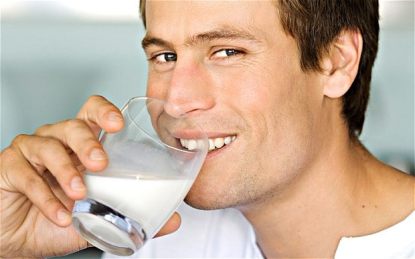
Date : 31 Jan 2017
1. Reduces Allergies
Studies now suggest that children who drink raw milk are 50 percent less likely to develop allergies and 41 percent less likely to develop asthma compared to children who don’t.
As documented on the Real Milk website, many other studies carried out over the past century have shown that raw milk benefits and supports children’s growth and development in other ways too, including increasing immunity against infections, boosting dental health and supporting skeletal growth, for example.
You might be wondering: How can raw milk reduce allergies, and isn’t dairy tied to high rates of intolerance or sensitivities? Nutrients like probiotics, vitamin D and immunoglobulins found in raw milk naturally boost the immune system and reduce the risk of allergies in both children and adults.
2. Helps Improve Skin Health
Dairy might have a bad reputation when it comes to causing or worsening acne and skin inflammation, but this is far from the case with raw milk. As we’ve seen, the benefits of raw milk are numerous, but surprisingly one of the most common reasons that people consume it is to benefit their skin. The success stories of people consuming raw milk to improve conditions such as psoriasis, eczema and acne are very widely reported.
Raw milk benefits the skin for the following reasons:
It contains healthy fats: Because raw milk contains large amounts of healthy saturated fats and omega-3 fats, it supports skin hydration. In fact, some people don’t only consume raw milk, but they use raw milk as a moisturizer topically.
It supplies probiotics: Probiotics in raw milk can kill off or balance bad bacteria in your gut, which can dramatically affect the health of your skin. Research shows that inflammation and unbalanced gut flora contribute to skin issues such as acne and eczema.
3. Helps Prevent Nutrient Deficiencies
One serving of raw milk contains about 400 milligrams of calcium, 50 milligrams of magnesium and 500 milligrams of potassium. (7) These minerals are vitally important for cellular function, hydration, building bone density, blood circulation, detoxification, muscle health and metabolism. These happen to be three minerals many children and adults are deficient in, which is especially problematic considering most people have a high sodium intake.
4. Can Be Used to Make Probiotic Foods
Probiotics are microorganisms that line your gut and support nutrient absorption. They also help protect you from foreign invaders like E. coli and parasites. The best way to include probiotics in your diet is to get them in their most natural state, which includes raw milk products, such as cheese, kefir and yogurt. Real, raw and organic probiotic yogurt, cheeses and kefir have been consumed by some of the healthiest populations living around the world for thousands of years. Some disorders probiotic foods are known to help with include:
Colon cancer
Diarrhea
Inflammatory bowel disease
Intestinal infections
Irritable bowel syndrome
Skin infections
Weakened immune system
Urinary track infections
Vaginal yeast infection
5. Doesn’t Contain Added Sugar or Synthetic Ingredients
In addition to pasteurization, conventional milk also usually undergoes a homogenization process. Homogenization is a high-pressure process that breaks down fat into tiny particles — however, fat subjected to high heat and pressure becomes oxidized and rancid. Many low-fat dairy products also have thickening agents added to make up for lost texture, and some have even been tied to rising rates of inflammatory diseases like cancer. Raw milk needs no added thickeners or shelf-stabilizers and also doesn’t contain added sugar or flavors.